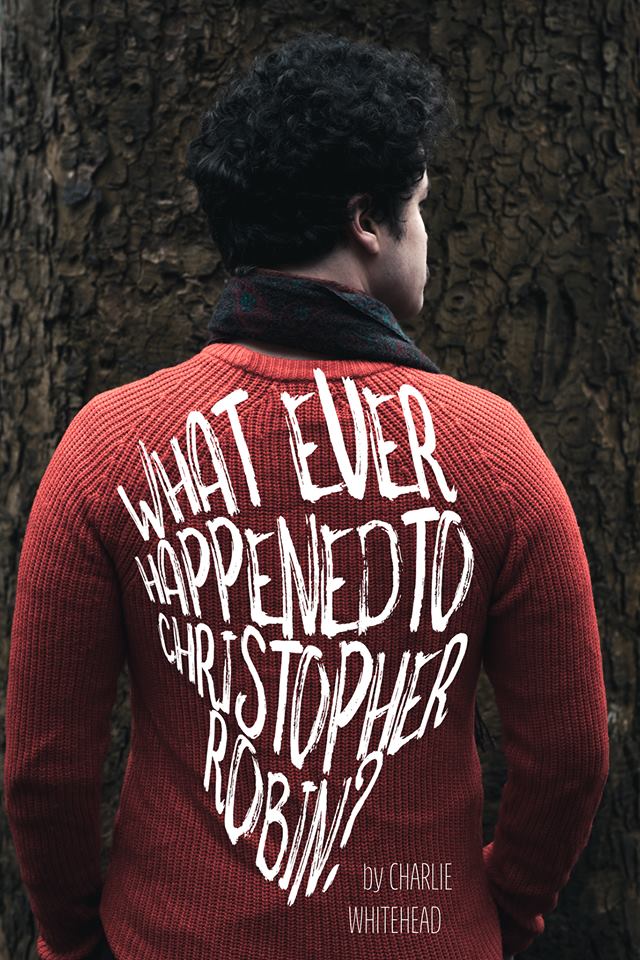
Poster Credit: Victoria Ng and Mark Norton
Taking an discerning look into male mental health and its perception, What ever happened to Christopher Robin follows the wife of Christopher Robin after his death.
As the titular character, Barney Mercer’s Christopher Robin starts out as the charming male lead we see in films, offering witty comments in response to Lucy Little’s Jane Robin, but he aptly builds up his actions to become more frantic as the piece progresses. What start out as characteristic gestures smoothly devolve into the fraught motions of a man breaking down, and what start out as speech patterns develop into a frenzied panic attack. Mercer starts it subtly enough that the break between his character and his mental deterioration doesn’t feel sudden, as it easily could have done with the flashback format of the show, and builds it up to a climax which is allowed to feel realistic within his performance.
Charlie Whitehead’s script competently conveys the struggles of mental health and how easy is it is to conceal, how easy it is to portray yourself as fine to many people. The humour interjected into the narrative allows it to have that everyday realism, which makes the intense scenes more impactful rather than overly hammer the point home from the very beginning. It cleverly plays on the audience’s knowledge of childhood favourite Winnie the Pooh and it is the pacing of the script which allows the play to feel as emotionally realistic as it is.
The back and forth between Christopher and Jane allows us to believe in their relationship, even if sometimes their dialogue feels a little forced. Christopher’s character was developed thoroughly, but despite the play being told from Jane’s perspective, it doesn’t quite feel as if she establishes a personality. It is hard to do within the short time frame, but sometimes her dialogue felt as if she was merely an abstract representation of opposition to Christopher’s deteriorating mental health. Her characterisation did pale next to Christopher, and perhaps that was the way it was intended, but it was difficult to feel sympathy for her character as well.
However, Lucy Little does portray Jane with enough feeling, and gets the most out of the backstory she has been given to help the audience feel sympathy. Her anger is obvious, and Little smoothly conveys her contained frustration at her inability to help Christopher, along with her conflicted feelings for him as her husband.
Whitehead’s direction is similarly clever, the flashback sequence contributes to the pacing which the script does so well, and it cuts off younger Jane and Christopher at the just the right moments. It stops it feeling melodramatic and conceals the breakdown of Christopher until the very end. Whilst ear-piercing (and I’m hoping this wasn’t a technical issue), the noise as Christopher reaches his breaking point only intensifies the feeling for the audience as you feel almost unable to hear anything else.
What ever happened to Christopher Robin is an insightful, well-acted and cleverly written piece which conveys the realism of mental health and shines an important light upon its stigmas.
What ever happened to Christopher Robin is part of Durham Drama Festival. It will be performed as part of General Programme 1, on Thursday 7th November 8pm and Saturday 9th February at 2.30pm.
